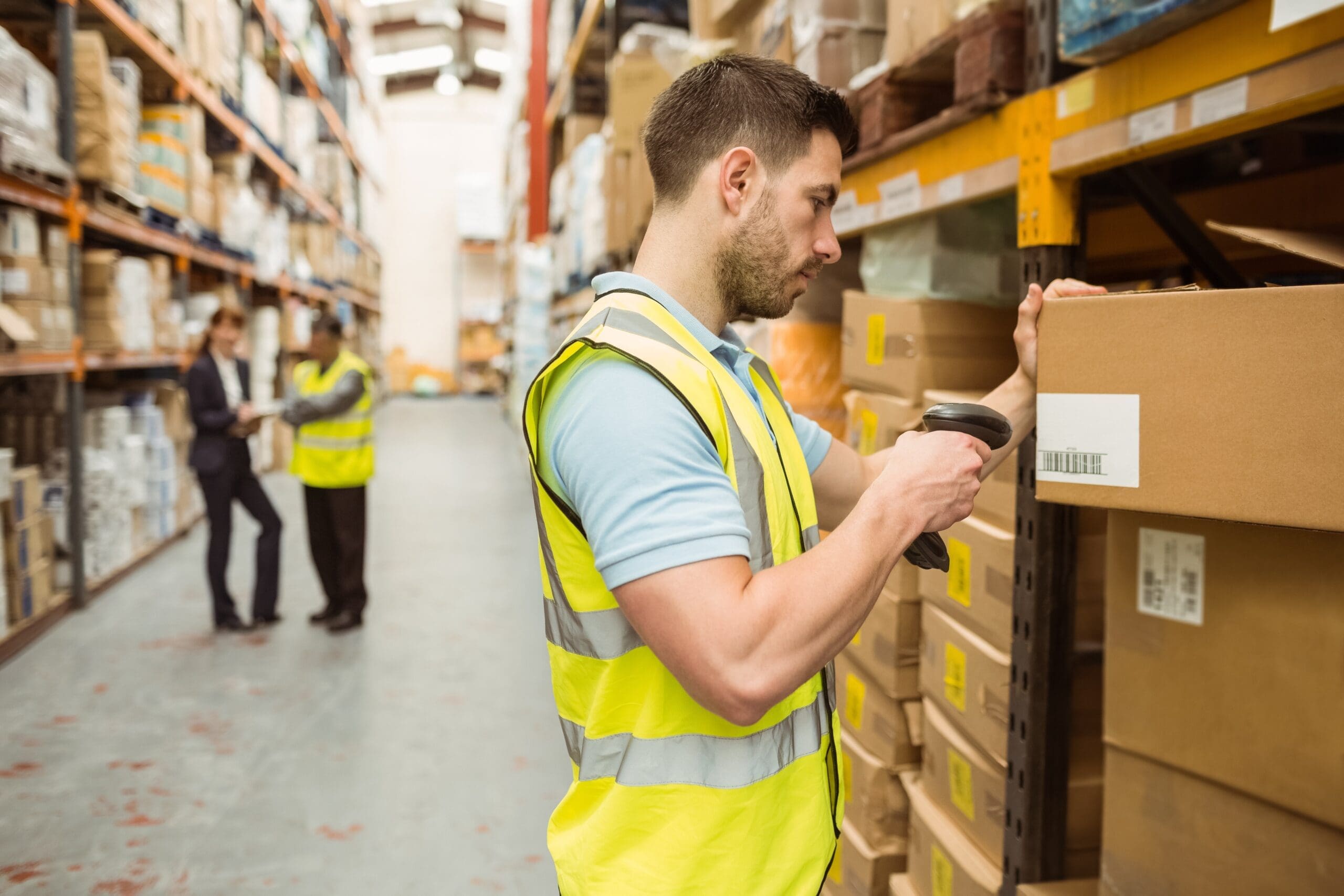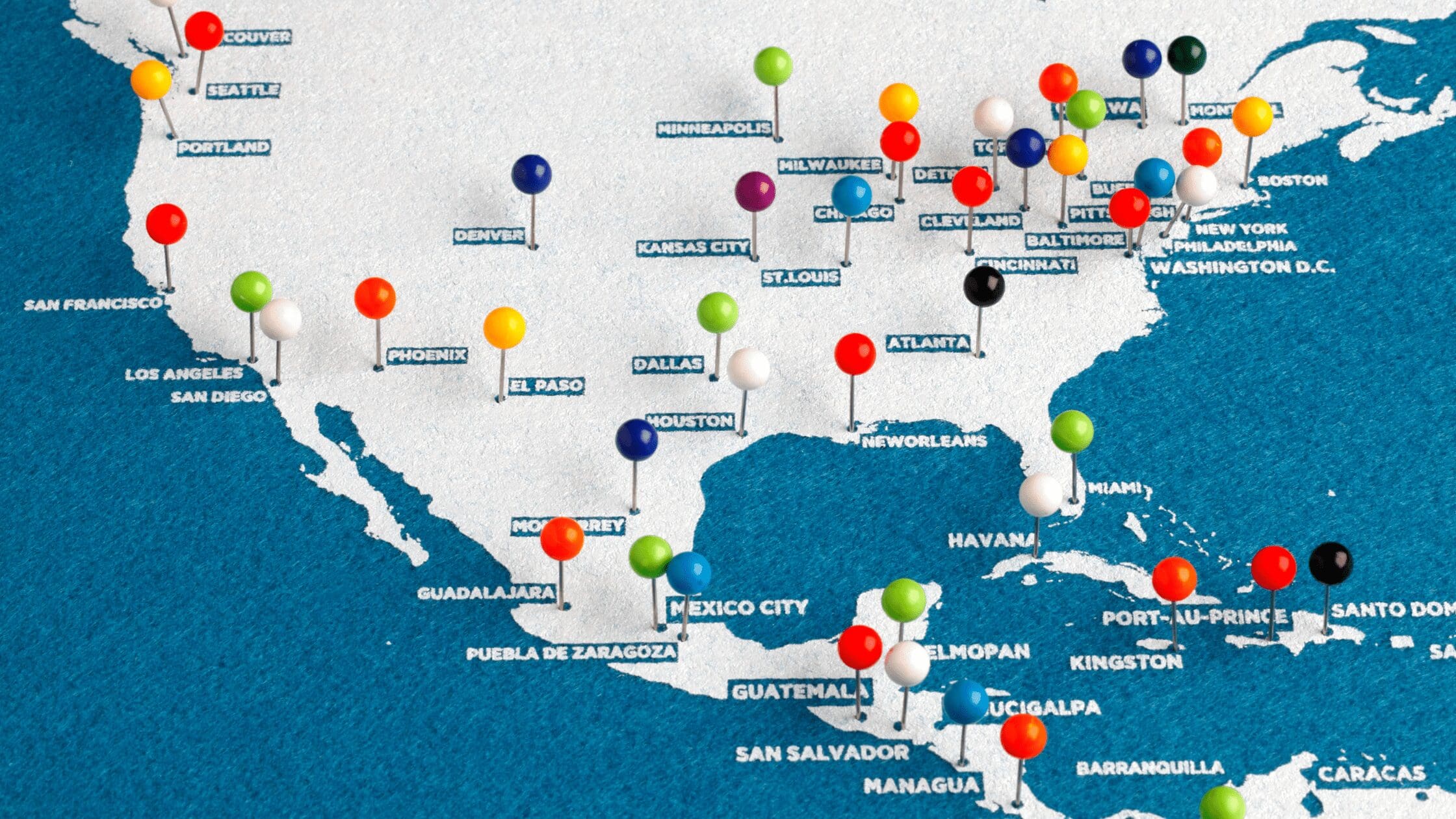Picking is at the heart of any ecommerce fulfilment strategy. When orders are picked efficiently and accurately, it allows you to seamlessly move on to other fulfilment processes (such as packing and shipping), and minimise lead times to get orders to customers faster.
As such, many ecommerce businesses constantly seek to optimise their picking processes and figure out the optimal picking strategies. While some brands rely on manual picking processes and others fully automate picking, many brands opt for a hybrid order picking strategy to get the best of both worlds.
In this article, we’ll dive deep into what hybrid order picking is, its benefits, and how brands can implement it for their warehouses.
What is hybrid order picking?
Hybrid order picking is a picking strategy where human workers work together with automated systems and tools to pick customer orders. This strategy leverages both manual and automated order picking processes to optimise picking efficiency without sacrificing accuracy.
Hybrid picking is a fairly new concept that is gradually gaining ground in the world of ecommerce fulfilment – especially as picking technology and robotics continues to advance and evolve. Besides autonomous robots, hybrid order picking can involve picking technologies such as pick-to-light systems, handheld picking devices, and voice picking systems.
Evolution from traditional to hybrid systems
Traditionally, the warehouse order picking process relied completely on human pickers and manual methods of identifying and retrieving items. This meant that pick lists were printed on paper and distributed to pickers, who then had to manually search for item locations within the warehouse. Upon locating items, these pickers will then check them against their pick list, cross off items that have been picked, and physically pick up and transport items to the packing station.
Although this strategy has its benefits, it can also be cumbersome and prone to errors. For instance, if there were to be a printing mistake on the pick list, pickers may pick the wrong items or the wrong quantity. Similarly, a picker might make an error while cross-checking, and accidentally mix up the quantities of items that are right after each other on the pick list.
Fully manual picking is also time-consuming. It requires pickers to walk across warehouses and between aisles to locate shelves and bins where items on their picking list are stored. If they needed to retrieve items from higher up on the shelf, they must rely on ladders or step stools to retrieve them. This tends to hamper productivity and create inefficiencies in order picking.
“Once we could see the pitfalls in our old manual system of fulfilling orders, we just realized we need something else to scale with. To get where we were going, we would need more structure to support all of our growth — so we switched to ShipBob.”
Bethany Peterson, COO of FlutterHabit
As warehouse technology evolved, businesses started to address some of these downsides with technology. Some of the most popular solutions include:
- Barcode scanners: Pickers could abandon traditional pick lists and instead scan barcodes on shelves and product units to quickly verify locations and items. This not only saves time, but also improves accuracy.
- Pick-to-light systems: Run by a warehouse management system (or WMS), this technology lights up the locations of each SKU that needs picking and displays the quantity that’s required. This allows the picker to quickly move from one location to the other instead of having to manually search through shelves and compare them with their picking list.
- Voice picking technology: A WMS translates picking actions into voice commands that are given to the picker, who then uses a unique voice tag to verify pick locations to further streamline picking.
- Goods-to-person systems: These tools use automation to make it easier for pickers to access items. This includes automated guided vehicles that lift racks and bring them to the operator.
- Automated robots: Mobile robots that can autonomously retrieve and carry items.
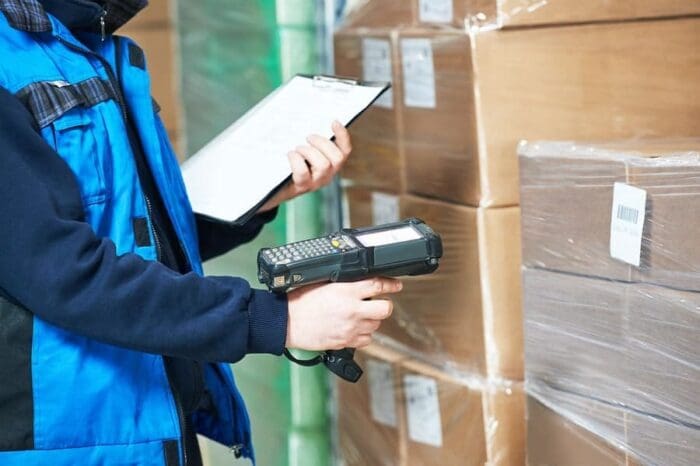
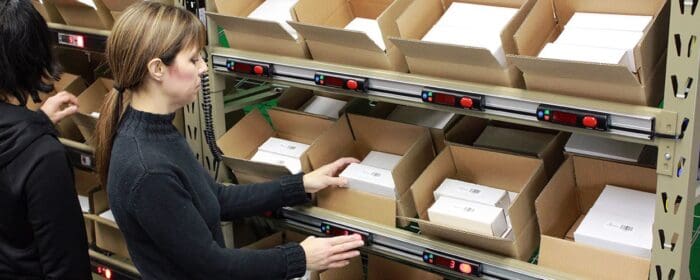
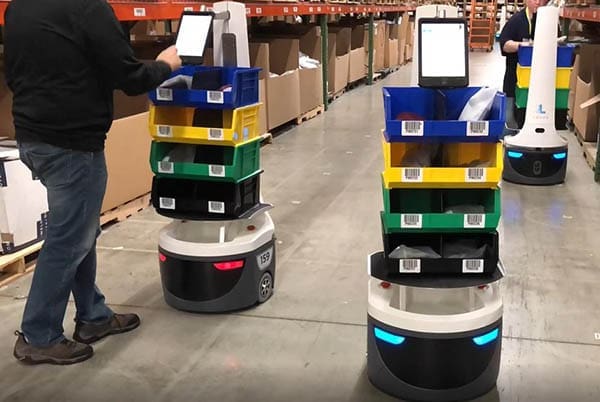
Key components of a hybrid order picking system
Hybrid order picking systems may vary significantly from business to business, but most rely on the same fundamental building blocks.
Human labour
Human operators still play a crucial role in hybrid order picking. This role may include guiding robots and automated systems, overseeing the picking and sorting tasks performed by robotic systems, and correcting errors. As such, they help improve the accuracy of the order picking process.
These operators typically perform tasks that are too complicated for robots, or that require a degree of human attention or knowledge. In some warehouses, human pickers retrieve the items whereas cobots (collaborative robots) handle the sorting process.
Human workers are also vital to managing peak loads and overcoming the limitations of robots and automated systems. Humans offer a degree of flexibility and adaptability that can help brands adjust to issues on the fly, which can help a brand stay agile during busy seasons and improve order picking efficiency overall.
Automation technology
Advanced automation tools assist human workers and collaborate with robotic systems to streamline the picking process. Specifically, supply chain automation and smart warehousing tools automate repetitive tasks and minimise the need for manual work.
For instance, your WMS can integrate with your ecommerce store to automate order processing. That way, orders placed in your store are automatically processed and received by the WMS and then assigned and sent to the appropriate distribution centre to kickstart the fulfilment process. after which picking lists are automatically generated by the system.
A WMS can also automatically generate pick lists using built-in algorithms that calculate optimal picking routes based on factors such as warehouse layout and storage locations. This decreases transit time and minimises the need for human workers to travel back and forth between multiple pick locations, speeding up the picking process and improving order fulfilment efficiency as a whole.
Additionally, warehouse systems can integrate with other picking devices such as pick-to-light systems, handheld scanners, and voice picking systems to guide human operators. This enables your picking staff to quickly navigate the warehouse to identify the right pick locations and verify the items they need to pick. As such, you can not only improve efficiency but also reduce the risk of picking errors.
Moreover, automated storage and retrieval systems (AS/RS) can also be implemented to optimise the picking process. These systems allow human workers to quickly retrieve items without having to move from one picking area to the other, allowing for automated warehouse picking.
Robotics
Some hybrid order picking strategies may incorporate robotics to further automate and optimise the picking process. This may involve:
- Semi-autonomous robots to support human workers in performing certain picking functions.
- Fully autonomous robots to completely take over certain picking tasks and collaborate with humans in a shared workspace.
- Automated guided vehicles (AGVs) and autonomous mobile robots to transport goods and people while saving time and carrying a higher capacity of goods, both of which can improve picking rates.
- Cobots or collaborative robots that work safely alongside humans to improve precision and speed in the picking and sorting process. For instance, humans pick the items while cobots sort them so they can be seamlessly packed and shipped.
- Pick-and-place robotic arms to assist with order picking and material handling. These types of robots can pick up items from one location and place them in another, so some warehouses will mount them on an AGV to physically retrieve items from shelves and place them inside bins to automate the picking process.
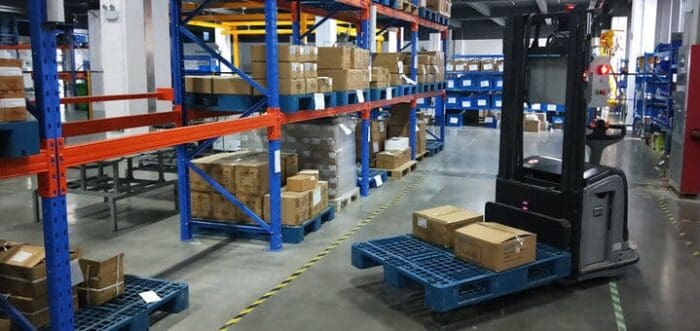
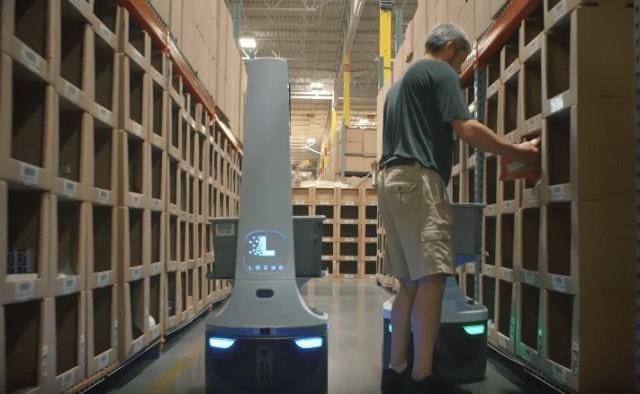
Benefits of hybrid order picking for warehouses
A business may opt for a hybrid picking strategy for a number of reasons. Here are some of the biggest benefits of implementing hybrid order picking in your fulfilment operations.
Increased throughput
With humans and automation working seamlessly together and compensating for each other’s limitations, hybrid order picking often increases productivity.
For instance, optimised picking routes allow you to reduce travel time, which frees up human workers to pick more items per shift. Meanwhile, transporting picked goods in an AGV allows pickers to increase their picking capacity, meaning they can pick more items at each trip. Autonomous picking robots can also continue to pick orders while human workers take a break, adding to the throughput.
Improved efficiency
Hybrid order picking is designed to make picking faster and easier overall. Automation technology such as a WMS generates picking lists based on optimal pick routes, so pickers can quickly travel from one pick location to the other. They may also utilise additional tools such as handheld scanners, pick-to-light systems, and voice picking systems to speed up picking time.
Further, robots may also assist them in retrieving items from hard-to-pick locations or transporting picked goods to the sorting station. All of this speeds up the picking process, meaning pickers can pick more orders in the same amount of time.
Enhanced precision
In a hybrid order picking system, humans, automation tools, and robots all minimise picking errors in their own ways. Automation systems and robots help prevent manual errors, and human focus and attention can catch many errors that might result from faulty programming or automation.
Increased cost savings
Increased productivity, efficiency, and accuracy naturally result in cost-savings for a warehouse. Even though robots and automation tools require larger upfront investments, brands see return on that investment when these tools allow human workers to perform their picking tasks more efficiently and with more precision. This subsequently brings down your operational costs while maximising your throughput, which bolsters your bottom line.
Implementing hybrid order picking in your warehouse
When you’re ready to get started with hybrid order picking, here are a couple best practices to follow.
Assess your warehouse’s needs
Before you jump into implementation, it’s important to take a step back and assess what aspects of your picking strategy need improvement.
Look at your current warehouse operations and facilities, and ask yourself the following questions:
- Are there any areas of the picking process that are prone to bottlenecks?
- How can I improve on my brand’s current picking methodology?
- Which picking metrics need improving?
- Do I need to invest in new tools and technology?
- How can existing systems better integrate with human processes?
Addressing these questions will help you pinpoint which improvement opportunities to focus on, and help you set goals for your new picking strategy.
Integrate new technology with staff
Hybrid order picking requires humans to work seamlessly with technology – so to get the most out of the strategy, make sure that your staff is trained on any new technology. Take the time to thoroughly onboard your staff, walk them through new procedures for picking items, and answer any questions. This will enable them to make the most of automation and robotic tools to perform their tasks more efficiently.
At ShipBob, for instance, brands that choose to implement our WMS in their own warehouses receive hands-on training and implementation, so they’re fully prepared to run and optimise fulfilment operations on their own. Our experts even provide recommendations and guidance on facilities planning to optimise their current warehouse layout and fulfilment operations.
What will the future of warehouse picking look like?
While human attention is still a vital part of hybrid order picking, new technologies are increasingly being used to further minimise the amount of manual labour picking requires.
Some of the most exciting developments in warehouse picking technology include:
- An increased use of IoT to automate certain picking operations, and free up human workers to perform more complex tasks.
- Drones with cameras and sensors so they can locate items stored on high shelves, making retrieval faster and safer (as workers don’t need to climb on ladders or use forklifts).
- Augmented reality (AR) glasses that can display digital overlays on goods stored in the warehouse, providing them with real-time product information so they can quickly and correctly locate items.
ShipBob continues to dominate the fulfilment and order picking industry
In the ever-evolving warehouse optimizations landscape, professional logistics partners like ShipBob are at the cutting edge of picking innovation.
ShipBob’s WMS combines automation with human best practices to drive efficiency and accuracy – both in our own fulfilment centres, and in our customers’ warehouses.
Ski sunglasses brand Pit Viper, for example, leverages ShipBob’s WMS to successfully implement hybrid order picking and eliminate 2,100+ mispicks a year. With multiple validation checks from start to finish, ShipBob’s WMS allowed them to seamlessly screen customer orders to ensure that the right items were shipped to the right customers. Their order accuracy rate went from 92% to 99.7%.
“One of the biggest reasons we went with ShipBob is the multiple checks from start to finish. The WMS makes it really hard to send out the wrong product.
Our order picking and routing has also greatly improved with ShipBob. With the ShipBob WMS, we can create the most efficient routes through the warehouse, which has cut down on an insane amount of time and made picking, packing, and shipping so much more efficient.”
Jourdan Davis, Operations Manager at Pit Viper
Similarly, companies like Spikeball have saved time and money by switching from manual label printing and tribal knowledge to ShipBob’s WMS. ShipBob’s WMS now automates the process of selecting couriers and putting in weight and dimension information, simplifying fulfilment and shipping for the viral sports game brand. They went from having 3-4 people spending all day packing orders to just one manager doing it all herself in half the time, just by implementing hybrid order picking through ShipBob.
“Our old way of doing things caused compounding inefficiencies. But now the process for picking and packing with ShipBob is very straightforward. All our manager has to do is pick the orders, bring them back to the pack station, pack them up, and send them out. Boom, done.
Now she doesn’t have to worry about selecting couriers and putting weights and dimensions in herself, because the ShipBob WMS does that for her.”
Adam LaGesse, Global Warehousing Director at Spikeball
ShipBob’s dynamic picking and packing methods
ShipBob’s industry-leading WMS offers flexible options for different picking methods including batch picking, auto-cluster, custom cluster, and even single-order picking. That way, your brand can use the optimal pick method for your e-commerce warehouse to maximise efficiency.
Along with dynamic picking strategies, ShipBob’s WMS also offers merchants capabilities like:
- Automatic pick list generation: ShipBob’s WMS identifies the most efficient picking routes according to your warehouse’s layout to reduce picking time.
- Labor forecasting: ShipBob’s WMS tracks productivity data to help your brand forecast your labour needs more accurately, based on how many orders an employee can pick in an hour.
- Box selection algorithm: ShipBob’s WMS incorporates data from product measurements to select the ideal box size for every order to minimise weight and reduce shipping costs.
- Prescriptive visuals: ShipBob’s WMS makes it easy to train new pickers with step-by-step packing flows and built-in gifs and visuals to demonstrate an exact packing process.
- Location-specific inventory visibility: ShipBob’s WMS makes it easy to check SKU levels and locate inventory throughout your warehouse in real-time.
For more information on how ShipBob can help you implement hybrid order picking, or optimise your picking in general, click the button below.
Hybird order picking FAQs
Below are answers to commonly asked questions about hybrid order picking.
What is hybrid order picking and how does it differ from traditional methods?
Hybrid order picking incorporates automated systems and sometimes autonomous robots along with human workers to perform picking functions. While traditional methods rely solely on manual labour, hybrid fulfilment leverages robotics and automation tools to take on repetitive, time-consuming tasks to improve efficiency.
How does hybrid order picking enhance warehouse efficiency?
Hybird order picking enhances warehouse efficiency with tools that allow human workers do their jobs more easily. This includes tools that automate repetitive tasks and algorithms that calculate optimal picking routes.
Can hybrid order picking systems be customised for different types of warehouses?
Yes, hybrid order picking systems can be customised according to the unique needs of different types of warehouses.
